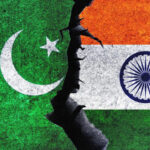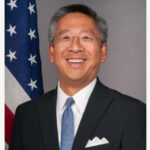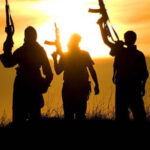The ADGPI, the army’s public relations wing, has declined to comment on reports over Depsang.
Reports of a heavy Chinese presence at Depsang, an area at a crucial dip (called the Bulge) on the Line of Actual Control (LAC) have increased tensions between Indian and Chinese troops, sources aware of the month-long standoff at various points in Ladakh and Sikkim said.
The ADGPI, the army’s public relations wing, has declined to comment on reports over Depsang.
According to the sources, PLA troops have pitched tents in the area in the past few days, while equipment, LAVs and a “large number” of tanks can be seen further back in area that China controls.
The “Depsang plain” is one of the few places in the Western Sector where light armour (vehicles) would have ease of manoeuvre, so any Chinese buildup there is a cause for concern, military experts say.
The buildup invokes memories of both the 1962 war, when Chinese troops had occupied all of the Depsang plains, and more recently, April 2013, when the PLA crossed the LAC and pitched tents on the Indian side for three weeks, before they agreed to pull out.
Two-pronged strategy
“In 2013 we managed to ensure the exit of Chinese troops, using both diplomatic and political pressure,” former National Security Advisor Shiv Shankar Menon told The Hindu, speaking about the two-pronged measures that were used to push the PLA troops back over the LAC at the time. According to Mr. Menon, India insisted at the time that not only did the troops need to move back from the ‘stand-off point’, but they also verified the ‘end point’ of the withdrawal so as to avoid any repeat incursions.
“We refused to negotiate until the status quo was restored at the LAC, and we were told exactly where the troops would move back to. Meanwhile, we stopped talking to the Chinese side about a planned visit by Chinese Premier Li, a message that if the standoff didn’t end, the visit would be off,” said Mr. Menon. He was the NSA and Special Representative (SR) for boundary talks from 2010-2014, and had spoken to the Chinese SR Yang Jiechi, while present External Affairs Minister S. Jaishankar was India’s Ambassador to China and negotiated the Depsang crisis with his counterparts in Beijing.
As part of upgrading defences in Ladakh, beginning 2014 India started deploying tank regiments consisting of T-72s in Eastern Ladakh. This comes from the bitter experience of 1962 war when six AMX-13 tanks were airlifted to Ladakh in AN-12 transport aircraft but they failed to make any significant impact as the crew were not acclimatised to the environment and the tanks were not equipped to operate in the rarefied atmosphere.
One tank regiment was deployed in 2014 and another in 2016 with the eventual objective of having a full brigade.
According to Mr. Menon, the present standoff on the LAC would need to be negotiated differently, given changes in the current situation from 2013, as well as the fact that the standoff has dragged on for more than double the time than it took to resolve seven years ago.
In addition, there are at this point more than four areas where Indian and China soldiers are locked in the standoff, including at the Galwan river valley, Pangong Tso (lake) and Naku la, while several other points on the LAC have seen significantly larger Indian and Chinese troop presence.
Troops prepared
Sources said most of the troops that were moved over the past few weeks have finished their acclimatisation and have been deployed to counter the Chinese build-up along the Galwan Valley, larger Hot Spring Area and the Finger Area of the Pangong Lake.
When asked, Mr. Menon said the government’s current position of making no comment on the ongoing standoff was conducive to negotiations, which had enabled the PLA withdrawal from Depsang in 2013.
“The key to arriving at a successful outcome was keeping public rhetoric calm and steady, displaying strength, and giving the adversary a way out, which was our preferred solution,” said Mr. Menon, who is also the author of Choices: Inside the Making of India’s Foreign Policy, published in 2018.
Depsang tensions echo 2013 standoff
The ADGPI, the army’s public relations wing, has declined to comment on reports over Depsang.
Reports of a heavy Chinese presence at Depsang, an area at a crucial dip (called the Bulge) on the Line of Actual Control (LAC) have increased tensions between Indian and Chinese troops, sources aware of the month-long standoff at various points in Ladakh and Sikkim said.
The ADGPI, the army’s public relations wing, has declined to comment on reports over Depsang.
According to the sources, PLA troops have pitched tents in the area in the past few days, while equipment, LAVs and a “large number” of tanks can be seen further back in area that China controls.
The “Depsang plain” is one of the few places in the Western Sector where light armour (vehicles) would have ease of manoeuvre, so any Chinese buildup there is a cause for concern, military experts say.
The buildup invokes memories of both the 1962 war, when Chinese troops had occupied all of the Depsang plains, and more recently, April 2013, when the PLA crossed the LAC and pitched tents on the Indian side for three weeks, before they agreed to pull out.
Two-pronged strategy
“In 2013 we managed to ensure the exit of Chinese troops, using both diplomatic and political pressure,” former National Security Advisor Shiv Shankar Menon told The Hindu, speaking about the two-pronged measures that were used to push the PLA troops back over the LAC at the time. According to Mr. Menon, India insisted at the time that not only did the troops need to move back from the ‘stand-off point’, but they also verified the ‘end point’ of the withdrawal so as to avoid any repeat incursions.
“We refused to negotiate until the status quo was restored at the LAC, and we were told exactly where the troops would move back to. Meanwhile, we stopped talking to the Chinese side about a planned visit by Chinese Premier Li, a message that if the standoff didn’t end, the visit would be off,” said Mr. Menon. He was the NSA and Special Representative (SR) for boundary talks from 2010-2014, and had spoken to the Chinese SR Yang Jiechi, while present External Affairs Minister S. Jaishankar was India’s Ambassador to China and negotiated the Depsang crisis with his counterparts in Beijing.
As part of upgrading defences in Ladakh, beginning 2014 India started deploying tank regiments consisting of T-72s in Eastern Ladakh. This comes from the bitter experience of 1962 war when six AMX-13 tanks were airlifted to Ladakh in AN-12 transport aircraft but they failed to make any significant impact as the crew were not acclimatised to the environment and the tanks were not equipped to operate in the rarefied atmosphere.
One tank regiment was deployed in 2014 and another in 2016 with the eventual objective of having a full brigade.
According to Mr. Menon, the present standoff on the LAC would need to be negotiated differently, given changes in the current situation from 2013, as well as the fact that the standoff has dragged on for more than double the time than it took to resolve seven years ago.
In addition, there are at this point more than four areas where Indian and China soldiers are locked in the standoff, including at the Galwan river valley, Pangong Tso (lake) and Naku la, while several other points on the LAC have seen significantly larger Indian and Chinese troop presence.
Troops prepared
Sources said most of the troops that were moved over the past few weeks have finished their acclimatisation and have been deployed to counter the Chinese build-up along the Galwan Valley, larger Hot Spring Area and the Finger Area of the Pangong Lake.
When asked, Mr. Menon said the government’s current position of making no comment on the ongoing standoff was conducive to negotiations, which had enabled the PLA withdrawal from Depsang in 2013.
“The key to arriving at a successful outcome was keeping public rhetoric calm and steady, displaying strength, and giving the adversary a way out, which was our preferred solution,” said Mr. Menon, who is also the author of Choices: Inside the Making of India’s Foreign Policy, published in 2018.






NO COMMENT